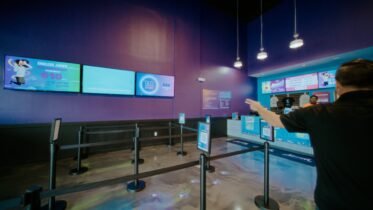The digital signage industry has existed for over 20 years, but there are still many new end users and integrators who attend trade shows like InfoComm seeking industry advice on how to get started.
InfoComm’s first-time attendees will encounter a sea of amazing LCD, OLED and LED displays, and many wonder where to start. With that in mind, here are some essential tips that anyone new to the industry should learn and embrace.
Establish the Purpose
Why is your organization considering buying and installing digital displays? What will they be used for? How will their benefits be measured, and what are those measurements? Are the reasons tangible, or soft, squishy and ultimately hard to quantify or evaluate? If nothing else, make sure you can determine what problem you’re seeking a solution for, and how to best go about solving it. Before you make the move to invest in digital signage, you must have a clear mission and objectives, and a way to determine if your project is hitting them.
Technology Doesn’t Matter … Yet
Don’t plan a project around certain displays and software. Before you start thinking about what kind of technology to use, sort out your mission and objectives, and make sure you have a solid sense of what kind of message will appear on the screens. You can pour resources into an amazing, high-budget video wall run by slick, powerful software, but it’ll still be unsuccessful if what’s on the screen isn’t relevant to your audience.
Programming Can Shape Technology Decisions
Draw inspiration from what you see at trade shows and in your daily travels, but be careful not to design your own content programming based on what you’ve seen elsewhere. Instead, develop programming that matters to your audience, and ensure it’s timely, fresh and relevant. Although subscribing to news, sports and weather content feeds is an easy way to make sure your content is fresh, it’s important to make sure your programming also addresses and realizes your objectives.
Determining the type and frequency of content also directly affects your technology decisions. If your network, for example, is just showing menu items for a staff dining hall, it doesn’t need a highly sophisticated content management program or powerful playback hardware, and would run very happily on a PC-free setup like a Samsung Smart Signage display. However, if the objective is to show a lot of HD content on Full HD or 4K displays, there are big implications from everything from the software and media players used to bandwidth capacity and storage.
Who Is Doing What?
The early planning process should establish roles and responsibilities for your digital signage project, such as which department will use the technology and which ones are impacted by it. Figuring out the answers to these questions ensures you’ll have a much greater chance of securing buy-in from the top, which is important when it comes to purchasing decisions.
The next step is to establish which department “owns” the project, and who will support it. The project owner builds estimates of how much time will be required to manage the project week to week, based on tasks such as scheduling, monitoring, content development and planning. Because making sure that weekly hours align with staff availability can be tricky, a lot of organizations outsource much of the project to solutions providers that have dedicated staff to handle tasks such as scheduling, distribution, monitoring, troubleshooting networks and sometimes even content creation.
It’s up to the project owner to decide what tasks your organization can take on by itself and what tasks to outsource.
Proper Budgeting
Although proper budgeting may seem as simple as going online and getting ballpark pricing on displays and multiplying that by the number of units needed, there’s a lot to consider in order to budget appropriately. When budgeting, be sure to factor in:
- Initial costs for all the related hardware, such as display mounts, media players and networking
- Parts and labor costs if new electrical and networking cable needs to be brought to the installation point
- Costs of software, and whether it’s paid for up front or through a SaaS model
- Staffing costs
- Initial and ongoing costs of content programming and creative budgets
You should also work with the CFO or finance arm of your organization to determine not just what the overall budget needs may be, but also the payment plans. Different organizations will want different ways to show the cost in budgets — such as capital costs versus operating costs, or buying versus leasing equipment.
Always Start With “Why?”
There are many other considerations for running a successful network. Some aspects, like budgeting, may be more critical to larger organizations. But fundamental planning matters whether the operator is a single dental clinic or a Fortune 500 company.
Just remember it all starts with a solid, well-considered answer to the simple question: “Why?”
Many different industries can benefit from having a strategically planned digital signage display. Here’s how digital signage is improving the customer experience at the DMV.








